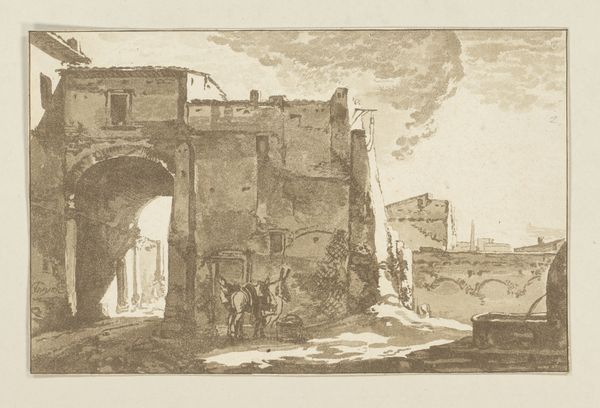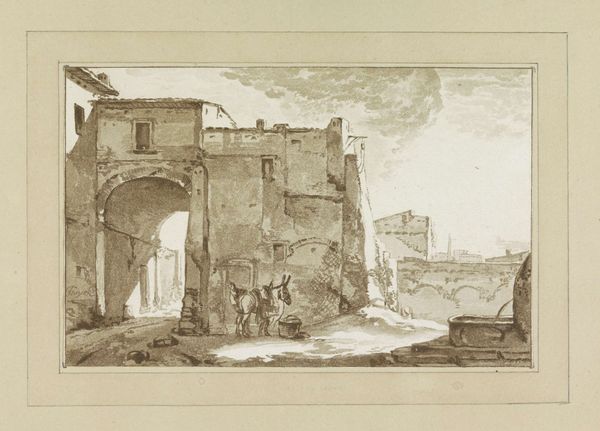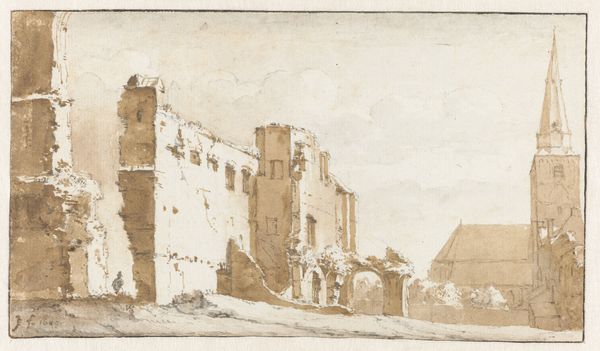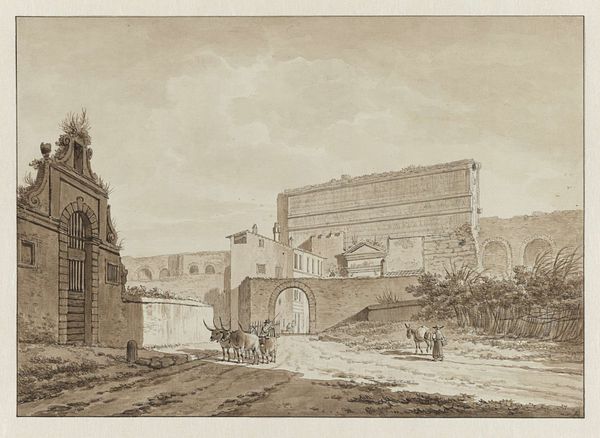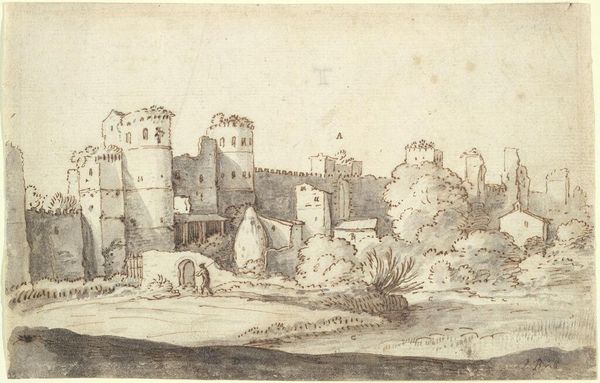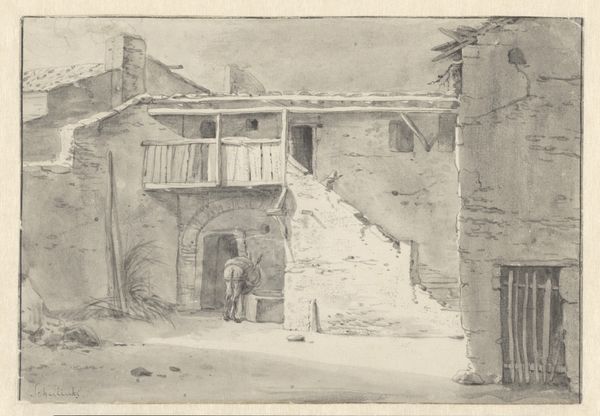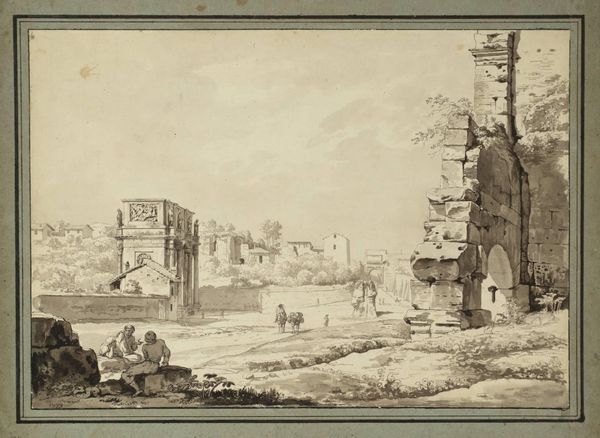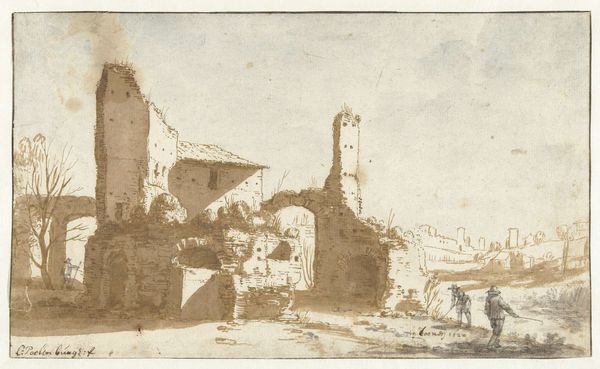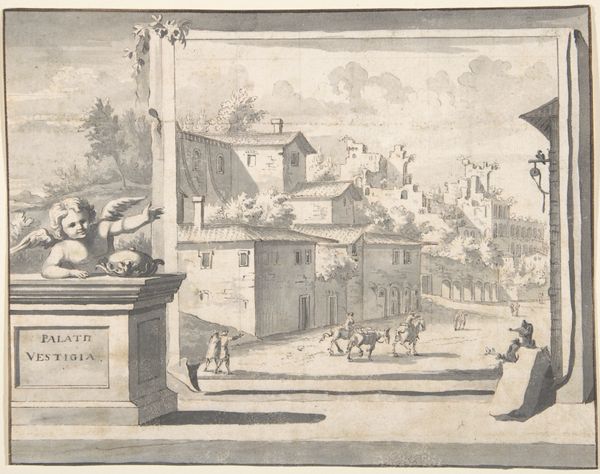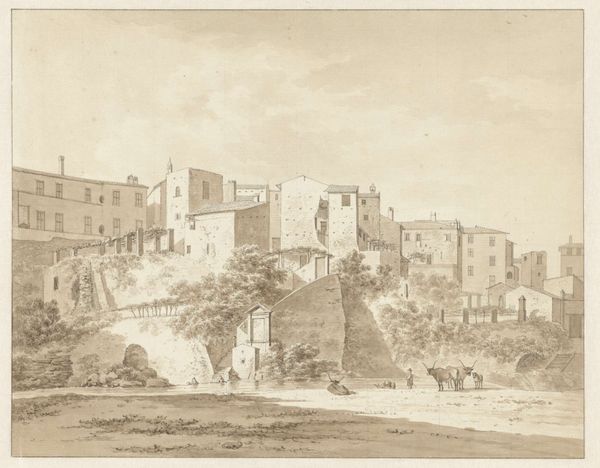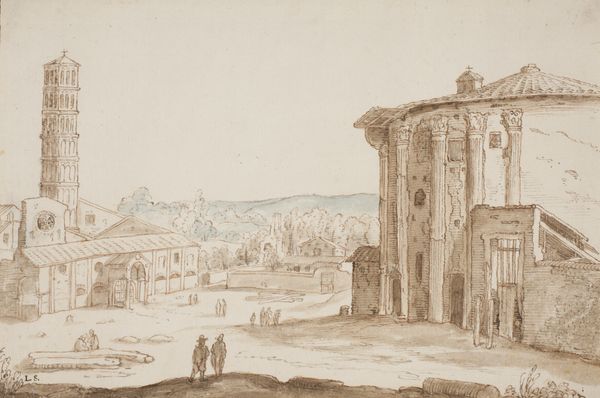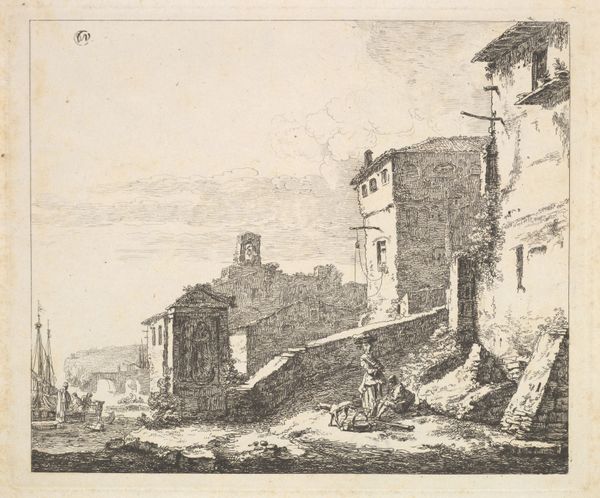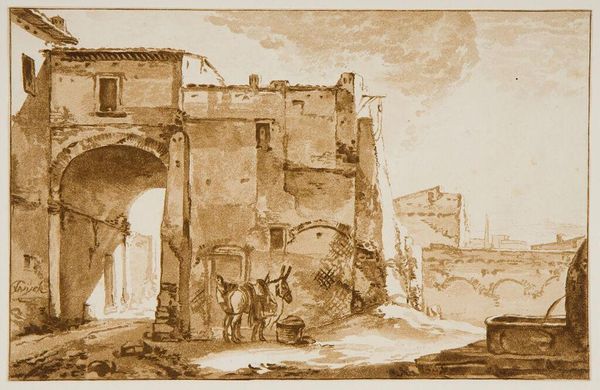
Capriccio with Reminiscences of Westminster Bridge and Richmond House c. 1755 - 1760
0:00
0:00
drawing, painting, etching, ink, architecture
#
drawing
#
baroque
#
painting
#
etching
#
landscape
#
ink
#
15_18th-century
#
cityscape
#
watercolor
#
architecture
#
rococo
Copyright: Public Domain
Editor: This is "Capriccio with Reminiscences of Westminster Bridge and Richmond House" by Canaletto, dating back to around 1755 to 1760. It appears to be a watercolor, ink and etching composition that features some interesting architecture. It almost feels staged. How do you interpret this work, and what makes it significant? Curator: I see this not merely as a depiction of architecture, but as a commentary on power, memory, and representation in 18th-century Britain. The "capriccio" form itself is key. By combining recognizable elements of Westminster Bridge and Richmond House with imagined elements, Canaletto is playing with the very idea of truth and authenticity. How do we build our sense of place and history from fragments of reality? Editor: That's a great point about "truth and authenticity," particularly when we think about it in a pre-photography era. Curator: Exactly! Consider also the social context. Canaletto made many paintings of England, popular among the wealthy elite. Were these images simple souvenirs, or did they shape and solidify a particular view of British identity and its place on the world stage? Editor: So, he was not just documenting, but also constructing a narrative? Curator: Precisely. Think about who commissioned and consumed these images. Whose perspectives were centered, and whose were marginalized or omitted? By studying these pieces, we can analyze how notions of nationhood and social status were visually reinforced. Even the artistic techniques—the precise linework versus the fluidity of the watercolor—contribute to the narrative. Editor: I see it now. I initially saw a nice cityscape but failed to fully grasp its cultural implications. It’s much more than just an image, it’s a cultural document. Curator: And through this dialogue, we excavate the socio-political dimensions embedded within its aesthetic appeal. I'm glad we could shed light on that today!
Comments
stadelmuseum about 2 years ago
⋮
Canaletto selected several buildings from the topography of London, assembled them in a new composition and enhanced them with Italian motifs such as the portal decorated with three statues or the statue on the high pedestal. The loggia also serves purely decorative purposes, since it possesses neither a door nor a passageway to the house behind it. A work that looks like a veduta at first sight is thus in reality a richly atmospheric capriccio with Italianized motifs of London. The meticulous execution, the multi-coloured wash, and above all the signature on the back are clear indications that the drawing was intended for sale.
Join the conversation
Join millions of artists and users on Artera today and experience the ultimate creative platform.
